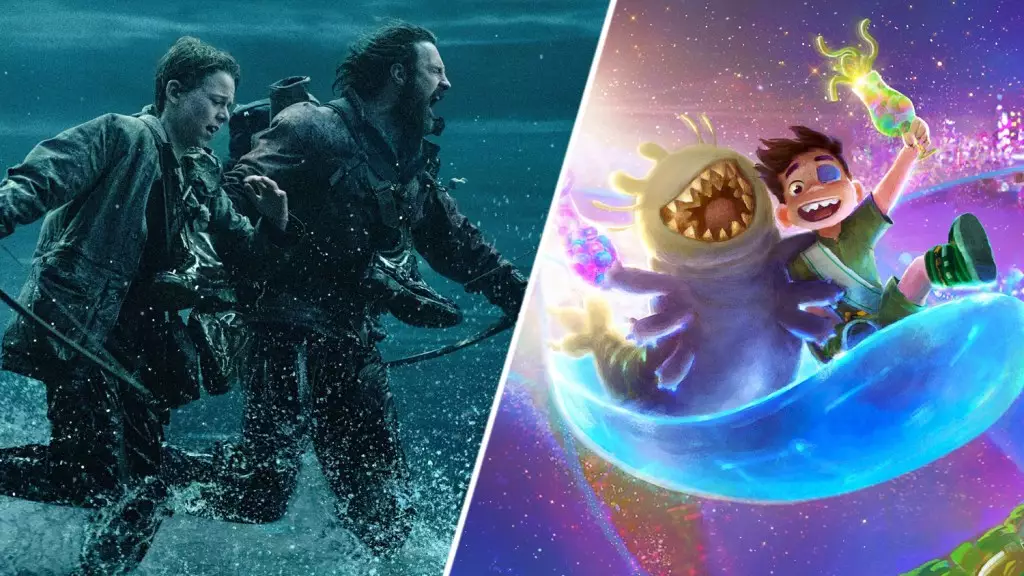The buzz surrounding Sony’s latest horror offering, *28 Years Later*, mirrors a battlefield where expectations clash with reality. As the film gears up for previews, propelling north of $5 million, one can’t help but notice the sharp divide between critical accolades and audience reception. Critics, lauding the film’s direction by Danny Boyle and screenplay by Alex Garland, have rated it a staggering 92% on Rotten Tomatoes. In contrast, general audiences, whose tastes might be considered pedestrian by cinephiles, are chiming in with a more tepid 67%. This stark disparity raises questions about the evolving landscape of movie critiques, where the same great film can evoke such varied responses from two distinct camps.
As someone with a center-right perspective on cultural trends, I find it troubling that today’s film goers often mirror social media echo chambers, where consensus often holds more weight than individual emotional reactions to art. Are we collectively forfeiting our diverse interpretations at the altar of online validation? This is particularly concerning in genres like horror, where the visceral experience often eclipses calculated critiques.
A New Take on a Well-Known Franchise
The film marks a significant return for Boyle, resonating with those who found *28 Days Later* a groundbreaking piece of cinema back in 2002. However, one must wonder if the franchise has overstayed its welcome. While nostalgia drives certain segments of the audience, there remains a risk that revival films will suffer from an audience yearning for originality rather than familiarity. The ghost of *28 Weeks Later* looms large—the second installation did not fare as well, opening with $9.8 million and quickly fading into obscurity.
In this light, the projection of a $28 million to $30 million opening feels optimistic, especially given the horror genre’s trend to frontload earnings. *Final Destination: Bloodlines* offers an interesting comparison; although it garnered a strong $5.5 million in previews, it was bolstered by a solid franchise reputation and effective marketing strategies. For *28 Years Later,* the question remains: Is fan loyalty enough to propel it forward without swaying toward disappointment?
The Animation Battle: Pixar’s *Elio*
In a different corner of the cinematic arena, Disney and Pixar’s *Elio* is fluttering into theaters with previews around $2.5 million to $3 million. Amidst the mounting stress on original animated projects, this film is positioning itself as a potential contender. The difference in reception, with critics scoring *Elio* at 86%, suggests that the storytelling quality is there, yet the lack of audience scores at present creates an air of uncertainty.
The comparison with Pixar’s earlier summer release, *Elemental*, highlights a broader trend: the challenges of launching original content in cinema. Audiences are increasingly resorting to well-known properties, and thus the success of *Elio* lies not just in its storytelling but in how it captivates audiences facing a constant barrage of content. Disneyland’s marketing machine can only carry a product so far; the film must stand on its own merit.
The Box Office Landscape
Universal/DreamWorks Animation’s *How to Train Your Dragon* is rumored to maintain the top spot in its second weekend, a testament to established franchises’ power in a volatile market. As newer films vie for attention, the importance of both critical reception and audience engagement becomes ever more apparent. Navigating these two realms, particularly with horror and animation, reflects a larger commentary on art and commerce in entertainment today.
In essence, while we lounge in theater seats, popcorn in hand, a complex web of expectations and tastes continuously shapes our viewing experiences. Whether you’re enthralled by *28 Years Later* or leaning towards *Elio*, the underlying sentiment remains clear: we are desperate for authentic storytelling that transcends numbers and ratings, driving the narrative forward in unexpected ways.

